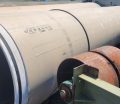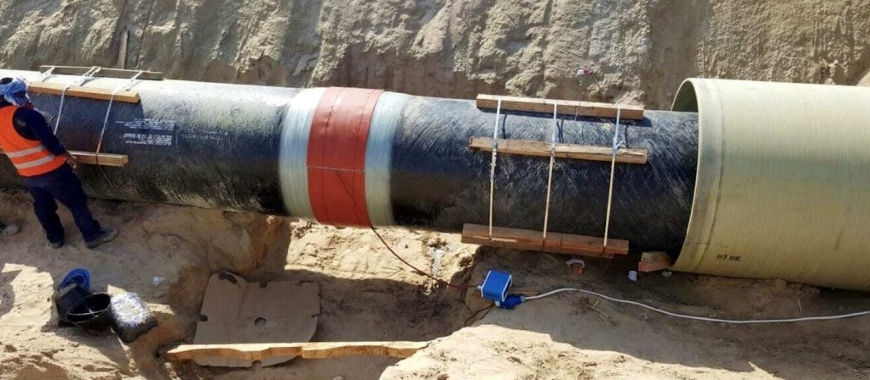
Bell and spigot FRP pipe is a type of fiberglass-reinforced plastic piping system that uses a bell-shaped end and a spigot end for joining. The bell end is flared to accommodate the spigot end of the adjoining pipe, creating a secure and leak-proof connection. This design allows for easy assembly and alignment, making it a preferred jointing method in various piping systems. Bell and spigot FRP pipe is commonly used in applications such as water treatment, chemical processing, and fuel containment. Their robust and flexible joints make them suitable for handling pressure variations and environmental stresses, ensuring reliable performance in diverse industrial settings. Bell and spigot FRP pipe ensures tight seals, leak-free O-ring fittings, angular flexibility, and durability for high temperatures and pressures.
Bell and Spigot FRP Pipe: Comprehensive Overview
Bell and spigot FRP pipe is a type of fiberglass-reinforced plastic pipe designed with a specific jointing system, where one end of the pipe (the bell) is slightly flared, and the other end (the spigot) is tapered to fit snugly into the bell of the adjacent pipe. This jointing method ensures a secure and leak-proof connection, making bell and spigot FRP pipe an ideal choice for applications that demand durability, chemical resistance, and ease of installation. GangLong Fiberglass manufactures bell and spigot FRP pipes that meet the requirements of various industries, including water treatment, chemical processing, and fuel transport.
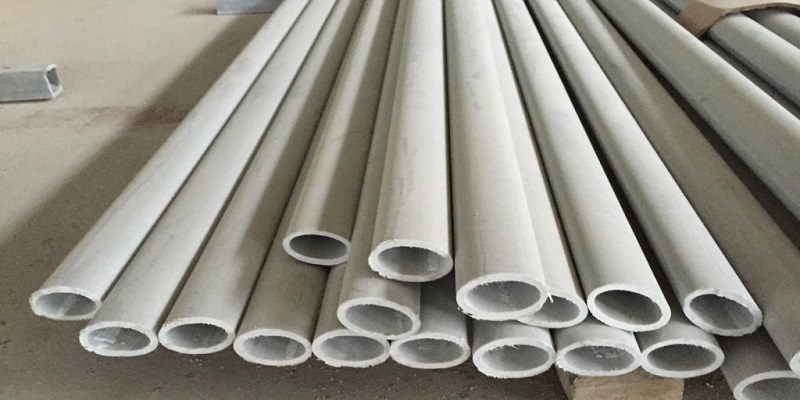
What is the Bell and Spigot Joint System
The bell and spigot joint system is a time-tested method for connecting pipes securely and efficiently. It involves inserting the spigot end of one pipe into the bell end of another, creating a joint that can be sealed using adhesives, gaskets, or other sealing mechanisms to ensure a watertight and durable connection.The use of an FRP pipe end cap at the pipe’s open end can further enhance the system by preventing the entry of debris and ensuring a secure, leak-proof seal at termination points.
- Design of the Bell and Spigot: In a bell and spigot FRP pipe, the bell end is manufactured to be slightly larger in diameter than the spigot end. The bell end is flared to accommodate the insertion of the spigot end of the adjacent pipe. The spigot end is tapered or beveled to fit into the bell end easily. This design allows for a snug and secure fit, minimizing the risk of leaks.
- Sealing the Joint: The joint between the bell and spigot can be sealed using different methods depending on the application requirements. Common sealing methods include the use of adhesives, such as epoxy or polyurethane, which provide a strong bond between the pipe ends. Alternatively, rubber gaskets or O-rings can be used to create a flexible seal that allows for slight movement while maintaining a leak-proof connection.
- Ease of Installation: The bell and spigot joint system is known for its ease of installation. The flared design of the bell end facilitates the insertion of the spigot end, making the assembly process quick and straightforward. This ease of installation reduces labor costs and minimizes installation time, making bell and spigot FRP pipe an efficient choice for various piping systems.
What is FRP Pipes
FRP (Fiberglass Reinforced Plastic) pipes are made from a composite material comprising a fiber-reinforced polymer matrix, manufactured via contact molding or filament winding. By using resins like polyester, epoxy, or phenolic, these pipes achieve unique properties tailored to specific applications. FRP pipes stand out as a corrosion-resistant alternative to metal pipes, eliminating the need for linings, coatings, or cathodic protection, making them cost-effective and highly durable.
Applications of FRP Pipes
FRP pipes are used in various industries due to their versatility and performance:
- Drinking water and seawater desalination
- Chemical, petrochemical, oil, and gas industries
- Irrigation, sanitary services, and water distribution
- Slurry pipelines and exhaust systems
- Power plants and other infrastructure
Performance of FRP Pipes
Key properties that make FRP pipes widely adopted include:
- Exceptional corrosion resistance
- High strength-to-weight ratio, surpassing metals like steel
- Lightweight, easy handling, and transport
- Dimensional stability and low friction for efficient flow
- Good wear resistance and low maintenance costs
- Non-conductive, biological attack resistance, and suitability for underground/above-ground use
These qualities establish FRP pipes as a reliable, cost-effective solution for industrial and municipal applications worldwide.
Fittings in Bell and Spigot FRP Pipe Systems
In bell and spigot FRP pipe systems, the term fittings encompasses all the accessories that support the functionality, adaptability, and performance of the pipeline. These fittings ensure leak-free, durable, and efficient connections in various applications. Below is a detailed introduction to the key fittings used in such systems:
Rubber Gaskets
Rubber gaskets are essential for creating a watertight seal within bell and spigot joints. Constructed from materials like EPDM or nitrile rubber, they resist aging, temperature fluctuations, and chemical exposure, ensuring long-term leak-proof performance.
O-Rings
O-rings enhance the sealing efficiency in high-pressure applications. Positioned within the spigot, they provide uniform pressure distribution and ensure secure, reliable joints even under dynamic stress.
End Caps
End caps are fittings used to seal the ends of FRP pipes. They protect the pipe interior from contamination and are particularly useful during transport, installation, or when temporarily closing sections.
Reducers
Reducers—both concentric and eccentric—are fittings designed to transition between different pipe diameters. They enable compatibility with varying system requirements while maintaining optimal flow characteristics.
Adapters
Adapters connect bell and spigot FRP pipes to other piping systems or materials, ensuring seamless integration into existing infrastructure or multi-material networks.
Flanges
Flanges are used in applications requiring detachable joints. These fittings allow easy access for maintenance or system modifications and provide robust, secure connections.
Alignment and Anchoring Tools
While not part of the pipe system itself, alignment tools and anchoring systems support proper assembly and secure fittings under external stresses or internal pressures.
By integrating these fittings into bell and spigot FRP pipe systems, pipelines achieve enhanced versatility, structural integrity, and long-term efficiency, meeting diverse industrial and municipal needs.
Advantages of Bell and Spigot FRP Pipe
Bell and spigot FRP pipe offers numerous advantages that make it an optimal choice for a wide range of industrial applications. These advantages include secure jointing, chemical resistance, flexibility, and ease of installation.
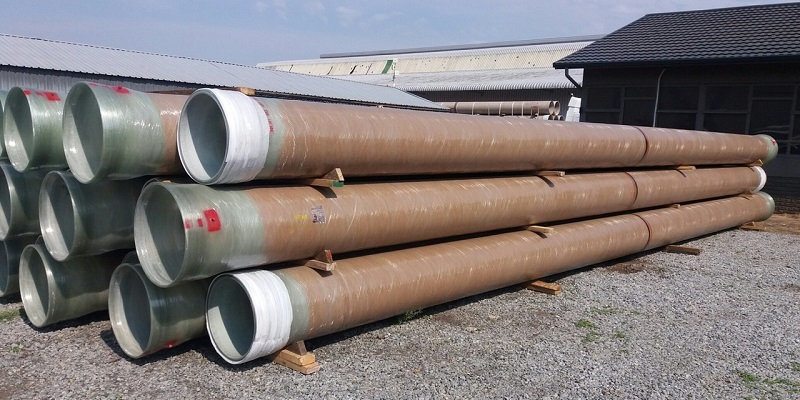
Secure Jointing and Leak Prevention
- Watertight Connection: The bell and spigot joint system provides a watertight connection that prevents leaks, even in high-pressure systems. The snug fit between the bell and spigot, combined with the use of adhesives or gaskets, ensures that the joint remains sealed, preventing fluid loss and contamination. This leak prevention is particularly important in applications involving the transport of hazardous chemicals or fluids.
- Strength and Durability: Bell and spigot FRP pipe joints are designed to withstand mechanical stresses, including internal pressures, axial loads, and external forces. The joint’s strength is enhanced by the use of high-quality adhesives or sealing materials, which bond the pipe ends together and create a durable connection that can endure the rigors of industrial operations.
Chemical Resistance
- Corrosion Resistance: Frp pipe bell and spigot is constructed using fiberglass reinforcement and a chemically resistant resin matrix, such as polyester, vinyl ester, or epoxy. This construction provides excellent resistance to a wide range of corrosive substances, including acids, alkalis, solvents, and hydrocarbons. The corrosion-resistant nature of the pipe and its joints ensures long-term performance and reduces the risk of leaks caused by chemical attack.
- Suitable for Aggressive Environments: The chemical resistance of bell and spigot FRP pipe makes it suitable for use in aggressive environments, such as chemical processing plants, wastewater treatment facilities, and marine applications. The secure jointing system ensures that the pipe can safely transport corrosive substances without compromising its integrity or causing environmental contamination.
Flexibility and Movement
- Accommodating Movement: The bell and spigot joint system provides a certain degree of flexibility, allowing the piping system to accommodate slight movements caused by thermal expansion, ground settlement, or vibrations. The use of rubber gaskets or O-rings in the joint provides a flexible seal that can absorb these movements without compromising the joint’s integrity or causing leaks.
- Stress Distribution: The design of the bell and spigot joint helps distribute mechanical stresses evenly across the joint, reducing the likelihood of stress concentration points that could lead to failure. This even stress distribution contributes to the overall durability and reliability of the piping system.
Ease of Installation
- Quick Assembly: The bell and spigot joint system is known for its quick and straightforward assembly process. The flared design of the bell end makes it easy to insert the spigot end of the adjacent pipe, and the use of adhesives or gaskets simplifies the sealing process. This ease of installation reduces labor costs and minimizes installation time, making bell and spigot FRP pipe an efficient choice for various piping systems.
- Reduced Equipment Requirements: Unlike other jointing methods that may require specialized equipment or tools, the installation of bell and spigot FRP pipe typically requires minimal equipment. This simplicity makes it possible to install the piping system in a variety of settings, including remote or confined spaces.
Double Containment with Bell and Spigot FRP Pipe
Bell and spigot FRP pipes are often used in double containment systems to transport hazardous materials safely. Double containment involves using a secondary pipe (the containment pipe) around the primary pipe (the carrier pipe) to provide an additional layer of protection in case of leaks or spills. This design is crucial for enhancing safety and preventing environmental contamination, particularly in applications involving fuel piping, chemical transport, and wastewater management.
Role of Double Containment Systems
- Enhanced Safety: Double containment systems are designed to enhance safety by providing an extra barrier that contains hazardous materials in the event of a leak in the primary pipe. The bell and spigot joint system, when used in double containment FRP pipes, ensures that both the primary and secondary pipes are securely connected and sealed. This double layer of protection is essential in applications where the accidental release of hazardous materials could pose a risk to human health, safety, or the environment.Understanding FRP pipe failure modes, such as crack propagation or material degradation due to chemical exposure, is crucial in these systems to ensure that both layers of containment function as intended, even under stress.
- Preventing Leaks and Spills: In applications involving the transport of chemicals, fuels, or other hazardous substances, the risk of leaks or spills can have severe consequences. The bell and spigot joint system provides a secure and leak-proof connection in both the primary and secondary pipes, reducing the likelihood of leaks at the joints. In the event of a failure in the primary pipe, the secondary containment pipe captures and contains the leaked substance, preventing it from reaching the surrounding environment.
Applications of Double Containment with Bell and Spigot FRP Pipe
- Fuel Piping Systems: In fuel piping systems, bell and spigot FRP pipes with double containment are used to transport fuels such as gasoline, diesel, and jet fuel. The double containment system provides a safeguard against leaks and spills, preventing the release of flammable liquids into the environment. The corrosion resistance of FRP pipes ensures that they can withstand exposure to hydrocarbons without degradation, further enhancing the safety and reliability of the fuel piping system. Additionally, it is essential to consult the FRP Pipe MSDS to understand the material properties, potential hazards, and safe handling practices, ensuring compliance with safety standards in such critical applications.
- Chemical Transport: In chemical processing plants, bell and spigot FRP pipes with double containment are used to transport hazardous chemicals, including acids, caustics, and solvents. The double containment system ensures that even if the primary pipe is compromised, the secondary pipe will contain the leak, preventing chemical exposure and contamination. This safety feature is crucial in facilities where the safe handling and transport of chemicals are of paramount importance.
- Wastewater Management: In wastewater treatment facilities, bell and spigot FRP pipes with double containment are used to transport sewage, industrial effluents, and other waste streams. The double containment system prevents leaks that could result in the contamination of soil, groundwater, or surface water. The corrosion-resistant properties of FRP pipes make them well-suited for handling aggressive wastewater, ensuring the longevity and integrity of the piping system.
Selecting the Right FRP Pipe Spacers for Your System
Bell and Spigot FRP Pipe Installation
Another key advantage of bell and spigot FRP pipe is its ability to accommodate slight movements and flexibility in the piping system. This feature is particularly important in applications where the pipes are subject to ground movement, thermal expansion, or vibration. The bell and spigot joint allows for a degree of flexibility without compromising the seal, reducing the risk of joint failure or pipe damage. To further enhance the stability and reliability of the system, the use of FRP pipe racks plays a crucial role. FRP pipe racks provide additional support by securing the pipes at predetermined intervals, preventing excessive movement or sagging. This integrated solution ensures that the bell and spigot joints maintain their performance, while the overall piping system remains aligned and protected from external stresses.. This flexibility not only enhances the system’s adaptability in underground piping applications, where soil settlement or seismic activity can cause slight shifts in the pipe alignment, but also contributes significantly to the overall life expectancy of the FRP pipe. By absorbing these movements and minimizing the stress on the joints, the bell and spigot design protects the integrity of the piping system, ensuring durability and extending its operational lifespan.
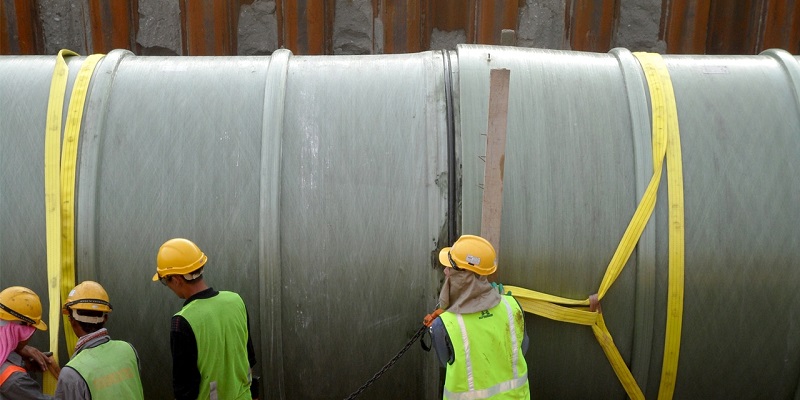
Installation Process of Bell and Spigot FRP Pipe
Proper installation is crucial to ensure the effectiveness and longevity of bell and spigot FRP pipe systems. The process involves several key steps, including surface preparation, joint assembly, and sealing.
Preparing the Pipe Ends
Before assembling the joints, it is essential to prepare the pipe ends. This involves cleaning and sanding the surfaces of both the bell and spigot ends to ensure they are free of contaminants, dirt, or debris. Sanding creates a slightly roughened surface that enhances the bond between the two pipe ends when adhesive or sealant is applied. Proper surface preparation is crucial for achieving a strong and durable joint, as it ensures that the sealant or adhesive can adhere effectively to the pipe surfaces.
Applying Adhesive or Gaskets
Depending on the application and desired level of sealing, FRP pipe adhesive or gaskets are applied to the bell and spigot ends. Adhesive provides a permanent bond that reinforces the joint and prevents leaks. Gaskets, on the other hand, offer a flexible seal that can accommodate slight movements or thermal expansion within the piping system. The choice between adhesive and gaskets depends on factors such as pressure requirements, environmental conditions, and the need for disassembly or maintenance. In high-pressure systems, both adhesive and gaskets may be used to ensure a robust and leak-proof connection.
Assembling the Joint
Once the adhesive or gasket is applied, the spigot end is carefully inserted into the bell end of the adjoining pipe. It is important to align the pipes accurately during this step to ensure a secure and even joint. In some cases, alignment tools or jigs are used to guide the pipe sections into place, minimizing the risk of misalignment. After the pipes are joined, they should be held in position until the adhesive cures or the gasket is fully compressed to create a tight seal. Proper assembly ensures that the joint is leak-proof and capable of withstanding the operational pressures and environmental stresses it will encounter.
Bell and Spigot FRP Pipe: A Secure Jointing Solution
Bell and spigot FRP pipe is a versatile and reliable piping system widely used in various industrial applications. This system involves a bell-shaped end and a spigot end that fit together to form a secure joint. The bell end of one pipe is designed to receive the spigot end of another, creating a tight seal that can be further reinforced with gaskets or adhesive. This method of jointing is known for its ease of installation, flexibility, and leak-proof performance, making it an excellent choice for industries requiring durable and efficient piping solutions. Products like those from GangLong Fiberglass utilize the bell and spigot design to ensure robust and long-lasting connections in FRP piping systems.
Importance of FRP Pipe Span Charts in Industrial Piping
Maintenance and Longevity of Bell and Spigot FRP Pipe Systems
To maximize the service life of bell and spigot FRP pipe systems, regular maintenance and proper handling are essential. Routine inspection, cleaning, and timely repairs help ensure that the piping system remains in optimal condition.
Routine Inspection and Cleaning
Regular inspection of the bell and spigot joints is crucial for identifying potential issues such as leaks, wear, or damage. During inspections, the joints should be checked for signs of movement, misalignment, or sealant degradation. Any leaks or weaknesses detected should be addressed promptly to prevent further damage or system failure. Additionally, cleaning the pipes and joints helps remove dirt, debris, and contaminants that could compromise the joint’s integrity or performance. Using appropriate cleaning agents that do not damage the FRP material or the sealant ensures that the system remains in optimal condition.
Repairs and Joint Maintenance
If a joint shows signs of wear or damage, repairs should be carried out to restore the integrity of the bell and spigot connection. This may involve reapplying adhesive, replacing gaskets, or realigning the pipe sections. In some cases, it may be necessary to cut out and replace a section of the pipe to ensure a secure and leak-proof joint. Proper maintenance practices, such as avoiding over-tightening or excessive movement during repairs, help preserve the system’s durability and performance. By addressing issues promptly and maintaining the joints, the service life of the bell and spigot FRP pipe system can be significantly extended.
Enhancing Safety and Leak Prevention
In double containment systems, the primary (inner) pipe transports the hazardous fluid, while the secondary (outer) pipe serves as a protective barrier. The bell and spigot design allows for the secure joining of both the inner and outer pipes, ensuring that the system remains leak-proof. By using FRP material for both the primary and secondary containment, the system benefits from the corrosion resistance and durability of FRP, reducing the risk of leaks or failures. This design is particularly valuable in fuel piping, chemical transport, and other applications where leaks could pose significant safety and environmental hazards.
How Resin Types Impact FRP Pipe Tensile Strength
Other Connection Methods of FRP Pipes
In addition to bell and spigot connections, FRP pipes can be joined using various methods tailored to specific applications and operational requirements. These include:
- Elbows: Long radius and short radius FRP elbows for directional changes.
- Tees: Equal diameter and reducing tees for branching connections.
- Flanges: FRP pipe flanges, steel back flanges, and flange reducers for detachable and secure connections.
- Reducers: Eccentric and concentric reducers for accommodating different pipe diameters.
- Special Designs: Flange elbows, smooth reducing elbows, and special bending radii for complex layouts.
- Cross and Star Connections: For multi-branch configurations.
- Horizontal Connections: For aligned pipelines.
These methods provide flexibility in design and installation for diverse industrial and municipal systems.
Advantages of Bell and Spigot FRP Pipes
Bell and spigot connections offer significant advantages compared to other methods:
- Ease of Installation: Quick assembly without the need for bolts or adhesives, reducing labor and installation time.
- Leak-proof Performance: Integrated gaskets or O-rings ensure a reliable seal under working pressure and environmental stresses.
- Flexibility: Allows slight angular misalignment, accommodating soil settlement or pipeline movement.
- Durability: The connection resists corrosion, mechanical stress, and temperature variations, ideal for long-term use.
- Cost-Effectiveness: Reduces the need for additional tools, welding, or maintenance, lowering overall costs.
While other methods provide versatility for complex configurations, bell and spigot connections excel in simplicity, reliability, and efficiency for straight pipeline sections and general applications.
FAQs about Bell And Spigot Frp Pipe
FRP pipes have a life expectancy ranging from 30 to 50 years or more, depending on factors such as the quality of materials used, manufacturing process, installation practices, and the operating environment. The inherent resistance of FRP to corrosion, chemical attack, and environmental factors contributes to its long service life, especially in applications where traditional materials like metal would degrade quickly. In environments where the pipes are exposed to aggressive chemicals, high temperatures, or mechanical stress, the choice of the correct resin and reinforcement materials can further extend the pipe’s lifespan. Proper installation and regular maintenance, such as inspections and cleaning, are also crucial in maximizing the life expectancy of FRP pipes. If installed and maintained correctly, FRP piping systems can provide decades of reliable service, making them a cost-effective solution for long-term infrastructure projects.
While FRP (Fiberglass Reinforced Plastic) pipes offer many advantages, such as high corrosion resistance, lightweight, and durability, they also have some challenges. One common issue with FRP pipes is their susceptibility to mechanical damage during handling, transportation, and installation. The fiberglass and resin structure, while strong, can be more prone to surface scratches, cracks, and impacts compared to metal pipes. Proper care must be taken to avoid dropping, striking, or over-tightening the pipes during installation. Another potential issue is UV degradation when FRP pipes are used in outdoor settings. Without a protective UV-resistant coating, prolonged exposure to sunlight can cause the resin to degrade, leading to surface cracking and a reduction in mechanical properties. Chemical compatibility is also a factor; although FRP pipes are resistant to many chemicals, they may still be vulnerable to certain substances if the wrong resin type is used for the application. Proper material selection and surface protection are essential to ensure the long-term performance of FRP piping systems.
A bell and spigot pipe is a type of pipe connection where one end of the pipe (the bell) is flared or expanded to receive the plain or tapered end of the adjacent pipe (the spigot). This design allows for a secure and leak-proof joint. During installation, the spigot end is inserted into the bell end, and the joint is sealed with a gasket, sealant, or adhesive to prevent leakage. The bell and spigot connection is commonly used in water, sewage, and drainage systems because it allows for some flexibility and movement while maintaining a secure seal. This flexibility is particularly useful in accommodating ground movement, temperature changes, or pressure variations within the piping system. The bell and spigot design simplifies the assembly process, allowing for quicker installation compared to other joint methods like flanged or welded joints.
Bell and spigot pipes are commonly used for creating secure and leak-resistant pipelines, especially in water, sewer, and drainage systems. Their design facilitates quick and effective connections. The “bell” refers to the flared end of the pipe, and the “spigot” is the straight end that fits snugly into the bell. This connection system often incorporates gaskets or sealants to ensure a watertight seal. Bell and spigot pipes are ideal for projects requiring durable and reliable pipelines that can withstand external pressures, thermal expansion, and shifts in soil.
When used in FRP (Fiberglass Reinforced Plastic) materials, the bell and spigot design combines the lightweight and corrosion-resistant properties of FRP with the ease of installation and maintenance. These pipes are particularly advantageous in environments involving corrosive chemicals, high-pressure requirements, or extended service life needs, such as industrial processes, wastewater treatment, and irrigation systems.
FRP pipe stands for Fiberglass Reinforced Plastic pipe, a composite material constructed by embedding glass fibers in a polymer matrix. This structure offers high strength-to-weight ratios, corrosion resistance, and longevity, making FRP pipes a preferred choice in various industrial and municipal applications. These pipes can handle aggressive chemicals, high temperatures, and extreme pressures, which traditional materials like metal or concrete may not withstand as effectively.
In the context of bell and spigot systems, FRP pipes leverage these benefits for creating lightweight yet robust pipelines. FRP bell and spigot pipes are particularly valued in sectors like water treatment, petrochemical transportation, and irrigation, where the combination of durability and efficient jointing systems significantly reduces installation time and maintenance costs. This makes FRP an environmentally friendly and cost-effective option for long-term infrastructure development.
The bell and spigot connection is a method of joining pipes that provides a secure and often watertight seal. In this system, the “bell” is the flared end of one pipe designed to accept the “spigot,” or straight end, of the adjoining pipe. This connection is commonly reinforced with gaskets, adhesives, or other sealing mechanisms to prevent leakage, even under pressure or soil movement.
For FRP pipes, the bell and spigot connection method enhances their utility by combining the pipe’s inherent properties—lightweight construction, corrosion resistance, and high strength—with a reliable joint system. This design reduces the need for heavy machinery during installation, lowering project costs and timelines. FRP bell and spigot connections are widely used in applications like water supply, sewage systems, and chemical transportation, where efficient and durable pipelines are essential.

As the editor of GangLong Fiberglass, I have years of experience and in-depth research, focusing on cable tray products, fiberglass solutions, and grille systems. I incorporate years of industry insights and practical experience into every content, committed to promoting the progress of the industry. At GangLong Fiberglass, my commitment is reflected in every product, from innovative cable trays to durable fiberglass solutions and sturdy grille systems. As an authoritative voice in the industry, my goal is to provide valuable information to professionals and businesses and promote forward-looking solutions.


